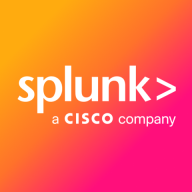

Splunk Enterprise Security and INETCO Insight compete in security and performance monitoring. Splunk has the upper hand with its extensive analytics and user-friendly setup, while INETCO's focus on transaction monitoring provides unique advantages.
Features: Splunk Enterprise Security offers comprehensive analytics capabilities, advanced threat detection, and incident response tools enhancing security intelligence. INETCO Insight provides real-time transaction monitoring, delivers insights into application performance, and focuses on transaction-level data.
Ease of Deployment and Customer Service: Splunk Enterprise Security provides flexible deployment that integrates with existing systems and extensive resources for onboarding and support. INETCO Insight requires a tailored deployment for specific monitoring needs and stands out for specialized service offerings.
Pricing and ROI: Splunk Enterprise Security, with high setup costs, offers substantial ROI due to its analytics capabilities. INETCO Insight's initial investment is offset by competitive pricing and ROI for systems focusing on transaction monitoring. Splunk's high costs come with broad utility, while INETCO's pricing is aligned with its niche efficiency.
| Product | Market Share (%) |
|---|---|
| Splunk Enterprise Security | 22.4% |
| INETCO Insight | 1.0% |
| Other | 76.6% |


| Company Size | Count |
|---|---|
| Small Business | 110 |
| Midsize Enterprise | 50 |
| Large Enterprise | 257 |
Splunk Enterprise Security delivers powerful log management, rapid searches, and intuitive dashboards, enhancing real-time analytics and security measures. Its advanced machine learning and wide system compatibility streamline threat detection and incident response across diverse IT environments.
Splunk Enterprise Security stands out in security operations with robust features like comprehensive threat intelligence and seamless data integration. Its real-time analytics and customizable queries enable proactive threat analysis and efficient incident response. Integration with multiple third-party feeds allows detailed threat correlation and streamlined data visualization. Users find the intuitive UI and broad compatibility support efficient threat detection while reducing false positives. Despite its strengths, areas such as visualization capabilities and integration processes with cloud environments need enhancement. Users face a high learning curve, and improvements in automation, AI, documentation, and training are desired to maximize its potential.
What Are the Key Features of Splunk Enterprise Security?In specific industries like finance and healthcare, Splunk Enterprise Security is instrumental for log aggregation, SIEM functionalities, and compliance monitoring. Companies leverage its capabilities for proactive threat analysis and response, ensuring comprehensive security monitoring and integration with various tools for heightened operational intelligence.
We monitor all IT Operations Analytics reviews to prevent fraudulent reviews and keep review quality high. We do not post reviews by company employees or direct competitors. We validate each review for authenticity via cross-reference with LinkedIn, and personal follow-up with the reviewer when necessary.